CBSE Sample Papers for Class 10 Social Science: Class 10 is one of the most important years in a student's academic career. Students need to...

CBSE Sample Papers for Class 10 Social Science 2025
March 7, 2025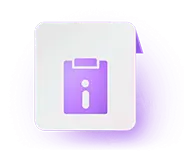
Karnataka Secondary Examination and Assembly Board (KSEAB), formerly known as Karnataka Secondary Education Examination Board (KSEEB), was founded in 1966. The Board conducts the exam for Class 10 in the state of Karnataka. The Class 10 exam is also referred to as Secondary School Leaving Certificate (SSLC) examination. The Board also administers the exam for Classes 11 and 12 for the Pre-University Certificate (PUC) level. The Karnataka State Board Class 10 examinations are conducted every year in March or April.
The KSEAB Class 10 exams are conducted at the state level in two major languages- English and Kannada. Approximately 9 lakh students from across the state appear for the Karnataka Board Class 10 exam every year. The Board designs the syllabus for the entire academic year that students must follow. Any student who does not qualify in the Karnataka Board Class 10 exam can also appear in the supplementary exams once the results are announced. All the important details about the KSEAB SSLC exams are discussed in detail in the article below. Scroll down to know more about the Karnataka SSLC date, syllabus, and other related updates.

The Karnataka SSLC exam is conducted every year by the Karnataka State Examination Board (KSEAB). Class 10 is important in a student’s life as it prepares them for higher education. Moreover, it is the first time that students will appear for the Board exams. Therefore, it is advisable that students prepare for the exam in a planned way to score higher marks. Karnataka State Board, therefore, focuses on enhancing students’ learning ability and helping them develop courage, self-awareness and integrity towards their learning.
An overview of the Karnataka SSLC Board is given below. Refer to the given table to have clarity about the Karnataka SSLC Board exams:
| Features | Details |
|---|---|
| Full Exam Name | Karnataka Secondary School Leaving Certificate Examination |
| Short Exam Name | Karnataka SSLC Board |
| Conducting Body | Karnataka School Examination and Assessment Board |
| Frequency of Conduct | Annually |
| Exam Level | Matriculate |
| Theory Marks | 80 Marks |
| Internal Assessment/ Practical/ Project Work | 20 Marks |
| Overall Passing Percentage | An aggregate of 35% |
| Mode of Exam | Offline |
| Exam Duration | 3 Hours |
Students can find the Karnataka Board Class 10 brochure as soon as it is released.
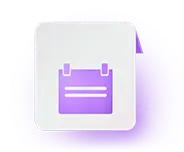
Karnataka Board Class 10 registration forms are tentatively released in October or November on the official website. Students must fill out their registration form in time so that they can receive the admit card. The KSEAB Class 10 registration form for regular students is to be filled out by respective students. Private students must fill out the KSEAB Class 10 registration form under the guidance of schools.
The steps to fill the Karnataka Board Class 10 registration form are as follows:
The fees for the Karnataka Board Class 10 application form are as follows:
| Category | Fee |
|---|---|
| General or Regular category | INR 300 |
| Late Registration for Regular students | INR 400 |
| For Private students | INR 600 |
| Late Private Students | INR 800 |

The Karnataka State Board releases the exam pattern for Class 10 every year. Students who will be appearing in these exams can check the exam pattern and prepare for their exams based on that. It is advisable that students carefully analyse the exam pattern and create their preparation tips. The KSEAB Class 10 exam is conducted for three hours. Each first language paper is conducted for 100 marks whereas other subjects have theory papers of 80 marks and internals of 20 marks. Students can get a better understanding of the Karnataka Board Class 10 exam pattern from the table below:
| Subjects | Marks- Theory | Marks- Internal |
|---|---|---|
| Language Paper I – Kannada, English, Hindi, Sanskrit, Telugu, Tamil, Marathi, Urdu |
100 | – |
| Language Paper II – Kannada, English |
80 | 20 |
| Language Paper III – Hindi, Kannada, English, Arabic, Urdu, Sanskrit, Konkani, Tulu |
80 | 20 |
| Maths | 80 | 20 |
| Science | 80 | 20 |
| Social Science | 80 | 20 |
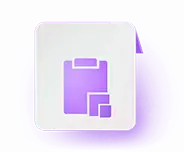
Students in Karnataka Board Class 10 need to appear for the exam depending on the syllabus. In the exam, no questions are asked out of the syllabus, which is why following the syllabus can prove to be extremely helpful for students. In the sections below, we have provided the complete KSEAB Class 10 subject-wise syllabus to help students prepare for the exam smoothly.
English is a very important subject for students appearing in KSEAB Class 10 exam. When students follow the KSEAB Class 10 English syllabus and prepare for the exams, the chances of them scoring a higher percentage become very easy. The English syllabus analyses the creative thinking and writing skills of students. Below is the syllabus for Karnataka Board Class 10 English:
| Sl No | Chapter Name |
|---|---|
| 1 | Reading Comprehension |
| 2 | Punctuation |
| 3 | Noun |
| 4 | Articles |
| 5 | Adjective |
| 6 | Verb |
| 7 | Prepositions |
| 8 | Conjunction |
| 9 | Tenses |
| 10 | Sentences |
| 11 | Transformation of Sentences |
| 12 | Vocabulary |
| 13 | Writing |
Maths is one of the major subjects of Karnataka Board Class 10 exams. It is advisable that students refer to the syllabus and prepare for the exam. Students can find the KSEAB Class 10 Maths syllabus from the table below:
| Chapter Number | Chapter Name |
|---|---|
| 1 | Triangles |
| 2 | Pair of linear equations in two variables |
| 3 | Surface areas and volumes |
| 4 | Statistics |
| 5 | Quadratic equations |
| 6 | Polynomials |
| 7 | Arithmetic progressions |
| 8 | Introduction to Trigonometry |
| 9 | Constructions |
| 10 | Coordinate Geometry |
| 11 | Real numbers |
| 12 | Some applications of Trigonometry |
| 13 | Probability |
| 14 | Area Related to circles |
Studying Science as per the KSEAB syllabus can help to excite students and make them curious. The more students prepare for the KSEAB Class 10 Science exam using the syllabus, the easier it will be for them to score marks. In the table below, we have provided the KSEAB Class 10 Science syllabus:
| Chapter No | Chapters |
|---|---|
| 1 | Electricity |
| 2 | Light Reflection and Refraction |
| 3 | Acids, Bases and Salts |
| 4 | Metals and Non-metals |
| 5 | Life Processes |
| 6 | Magnetic Effects of Electric Current |
| 7 | Carbon and its Compounds |
| 8 | Heredity and Evolution |
| 9 | Control and Coordination |
| 10 | How do Organisms Reproduce |
| 11 | Human Eye and the Colourful World |
| 12 | Chemical Reaction and Equations |
| 13 | Periodic Classification of Elements |
| 14 | Sources of Energy |
| 15 | Sustainable Management of Natural Resources |
| 16 | Our Environment |
Karnataka Board 10th Social Science is divided into four units- Geography, History, Civics/Political Science and Economics. Students must refer to the syllabus of each of these units thoroughly. The Karnataka Board Class 10 Social Science syllabus is available in the table below:
| Unit | Chapter Name |
|---|---|
| History | The Advent of Europeans to India |
| The Extension of the British Rules | |
| Kannada – Speaking Areas During the Colonial Rule Folk History | |
| The Impact of British Rule in India | |
| Opposition to British Rule in Karnataka | |
| Social and Religious Reformation Movements | |
| The First War of Indian Independence (1857) | |
| Freedom Movement | |
| The Era of Gandhi and the National Movement | |
| Post-Independent India | |
| The Political Developments of 20th Century | |
| Geography | Indian Position and Extension |
| Indian Physiography | |
| Indian Climate | |
| Indian Soils | |
| Indian Forest Resources | |
| Indian Water Resources | |
| Indian Land Resources | |
| Indian Mineral and Power Resources | |
| Indian Transport and Communication | |
| Indian Industries | |
| Indian Natural Disasters | |
| Indian Population | |
| Political Science | The Problems of India and their Solutions |
| Indian Foreign Policy | |
| India’s Relationship with Other Countries | |
| Global Problems and India’s Role | |
| International Institutions | |
| Economics | Development |
| Rural Development | |
| Money and Credit | |
| Public Finance and Budget |
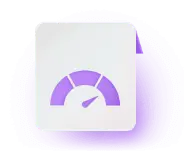
When students refer to the KSEAB Class 10 exam blueprint, it gives them a complete idea on what basis their performance will be assessed in the examination. Furthermore, it will also help students understand what level of competence is required to prepare for the exams. The Karnataka Board Class 10 exam blueprint acts as a roadmap that will contribute to the easier preparation of exams. It helps to align the objective with the assessment. In the table below, we have provided the Karnataka Board Class 10 subject-wise exam blueprint.
Students can find the KSEAB Class 10 Science blueprint from the table below:
| Chapter | Marks |
|---|---|
| Electricity | 7 |
| Light Reflection and Refraction | 7 |
| Acids, Bases and Salts | 6 |
| Metals and Non-metals | 6 |
| Life Processes | 6 |
| Magnetic Effects of Electric Current | 6 |
| Carbon and its Compounds | 6 |
| Heredity and Evolution | 6 |
| Control and Coordination | 5 |
| How do Organisms Reproduce | 5 |
| Human Eye and the Colourful World | 5 |
| Chemical Reaction and Equations | 4 |
| Periodic Classification of Elements | 3 |
| Sources of Energy | 3 |
| Sustainable Management of Natural Resources | 3 |
| Our Environment | 2 |
| Total Marks | 80 |
Once students understand the marks allocation for each chapter in Karnataka Board Class 10 Maths syllabus, they will be able to create a better strategy for exam preparation. Refer to the table below for KSEAB Class 10 Maths blueprint:
| Chapters | Marks |
|---|---|
| Triangles | 8 |
| Pair of Linear Equations in Two Variables | 8 |
| Surface Areas and Volumes | 7 |
| Statistics | 6 |
| Quadratic Equations | 6 |
| Polynomials | 6 |
| Arithmetic Progressions | 6 |
| Introduction to Trigonometry | 5 |
| Constructions | 5 |
| Coordinate Geometry | 5 |
| Real Numbers | 4 |
| Some Applications of Trigonometry | 4 |
| Probability | 3 |
| Area Related to Circles | 3 |
| Total | 80 |
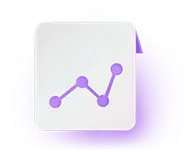
The Karnataka State Board Class 10 timetable 2024 has been released on January 18, 2024. The exams will be conducted from March 25 to April 6, 2024. All the exams will be held in different shifts. Check out the shift in the PDF attached in the latest update above. In the table below, we have provided the Karnataka Board Class 10 timetable 2024:
| SSLC Exam Time Table 2024 Karnataka | |
| Exam Dates | Subject (Timings – 10:30 p.m. to 1:45 p.m.) |
| March 25, 2024 | First Language: Kannada, Telugu, Hindi, Marathi, Tamil, Urdu, English, English (NCERT), Sanskrit |
| March 27, 2024 | Social Science |
| March 30, 2024 | Science, Political Science, Hindustani music, Karnataka music, Karnataka music/hindustani music |
| April 2, 2024 | Mathematics/Sociology |
| April 3, 2024 | Elements of Electrical Engineering IV, Elements of Mechanical Engineering-2, Elements of Mechanical Engineering – IV, Engineering Graphics-2, Elements of Electronics Engineering-IV, Elements of Electronics Engineering, Programming in ANSI ‘C’, Elements of Computer Science, Economics |
| April 4, 2024 | Third Language: Hindi, Kannada, English, Persian, Arabic, Tulu, Urdu, Sanskrit, Konkani, NSQF subjects |
| April 6, 2024 | Second Language: English, Kannada |
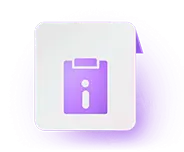
The Karnataka Board Class 10 admit card will be released on the official website in March 2024. Students appearing for the Karnataka Board Class 10 exam need to collect the provisional admit card from their respective schools. If students find any discrepancy or wrong information on the provisional admit card, the last date to inform the respective authorities is provided officially. The school authorities will be held responsible if the discrepancies are not resolved.
The KSEAB Class 10 admit card can be downloaded from the official website of the respective school. Students must collect the admit card from the school. The schools can download the Karnataka Board Class 10 admit card by following the steps mentioned below:
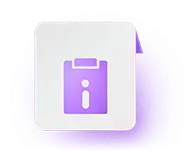
Scoring good marks in Karnataka Board Class 10 is not impossible.Exam preparation becomes easier if a student puts in the effort and hard work. Students must have a proper study plan that ensures they are preparing as per their pace yet getting to score higher marks in the exam. In the sections below, we have provided preparation tips and a detailed study plan that will help students prepare for the exam in a systematic manner.
Students of Class 10 Karnataka Board need to ensure that they follow the preparation tips properly. This will make it easier for them to score good marks. Below are some of the major preparation tips that can be helpful for students to ace their exams:
While students may think the preparation tips are enough to stay ahead, they are not. They will need to thoroughly pay attention to the smallest details to have an in-depth understanding of their learning and score good marks. A detailed study plan for KSEAB Class 10 makes it easier for students to plan their schedules and prepare for the exams. Below is a detailed study plan for the KSEAB SSLC exams:
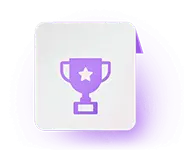
Karnataka Board Class 10 results for regular exams were released on May 30, 2023, with re-totalling/revaluation exam results declared on June 6, 2023. Students can check their results online from the website or via SMS. To check their Karnataka Board Class 10 result, students can send the message “KAR10” to 56263. Students may check the Karnataka Board Class 10 grading system from the table below:
| Grade | Percentage | Marks |
|---|---|---|
| A+ | 90 to 100 | 563 to 625 |
| A | 80 to 90 | 500 to 562 |
| B+ | 70 to 80 | 438 to 499 |
| B | 60 to 70 | 375 to 437 |
| C+ | 50 to 60 | 313 to 374 |
| C | 35 to 50 | 219 to 312 |
| D | Below 50 | Below 219 |

The results of Karnataka Board Class 10 2023-24 regular exams were announced on May 8, 2023. Also, Karnataka Board Class 10 re-totalling / revaluation results were declared on June 6, 2023. The list of toppers for 2024 shall also be announced shortly.
Students who will be appearing for Karnataka Board Class 10 should also be familiar with the previous year’s statistics. This gives them an idea about what is the average number of students that appeared in the exam and what the pass percentage was. Refer to the table below to know the previous year’s statistics of Karnataka Board Class 10:
| Karnataka Board SSLC Pass Percentage Pattern | ||||
|---|---|---|---|---|
| Year | Overall Pass % | Boys % | Girls % | No. of Students |
| 2021 | 99.99% | 100% | 99.99% | 8.73 lakh students |
| 2020 | 71.80% | 66.41% | 77.74% | 8,11,050 |
| 2019 | 73.7 | 78.01 | 79.59 | 8,40,000 |
| 2018 | 71.93 | 66.56 | 78.01 | 8,38,088 |
| 2017 | 67.87 | 74.08 | 62.42 | 8,77,174 |
| 2016 | 79.16 | 80.59 | 70.29 | 8,56,366 |
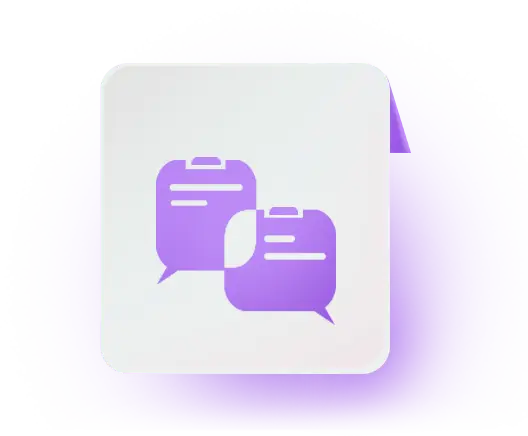
The Karnataka Board Class 10 supplementary were conducted after the KSEAB Class 10 results announcement, i.e., from June 12 to 19, 2023. Students who failed to appear in the regular exam on the assigned date or the ones who failed in a few subjects can appear for the supplementary exams. Appearing for the supplementary exam will save students from losing an academic year.
Students who want to appear for the KSEAB SSLC supplementary exam must fill out the supplementary exam form and pay the fees. If the student misses this chance to appear for the exam, they must wait an entire year until the next exam. We will update all the relevant information about the KSEAB Class 10 supplementary exam in this section once it is announced.

Below are some frequently asked questions on Karnataka Board Class 10 exams:
Q: What is the name of the conducting body of the Karnataka SSLC exam?
Ans: The Karnataka Secondary Education Examination Board (KSEAB) conducts the Karnataka SSLC examination.
Q: What is the duration of the Karnataka SSLC exam?
Ans: The duration of each paper of the Karnataka SSLC exam is three hours or 180 minutes. The exam timing is from 10:30 AM to 1:45 PM. However, students are suggested to check out their exam admit cards for exam date and timing.
Q: What are the subjects of the Karnataka SSLC exam?
Ans: The different subjects of the Karnataka SSLC exam are First Language, Second Language, Third Language, Science, Mathematics and Social Science.
Q: Where can I find mock tests for Karnataka Board Class 10 exams?
Ans: Students can find mock tests for Karnataka Board Class 10 exams on Embibe.
Q: How can I score better in the Karnataka Board SSLC exams 2024?
Ans: To prepare well for the Karnataka SSLC exam, students must first finish the complete syllabus. Make a proper timetable for each topic in each subject so that all subjects get equal time and attention. Once the syllabus is completed, start solving previous year papers, model test papers and give mock tests. This will help them analyse their preparation level and gain good results.

Numerous schools in the Karnataka State Board are affiliated to Karnataka State Board. Candidates who are willing to appear in the KSEAB exams must get enrolled in one of the affiliated schools. The major Karnataka Board Class 10 affiliated schools include the following:

After Class 10, students become familiar with the most common entrance exams: NEET (National Eligibility cum Entrance Test), JEE (Joint Entrance Exam), and CLAT (Common-Law Admissions Test). They start preparing for these competitive exams. However, they will be eligible for giving these exams only after they pass Class 12. Students must know that there are other competitive exams as well that they can appear for. After passing their Class 10, students can immediately appear for the following competitive exams: